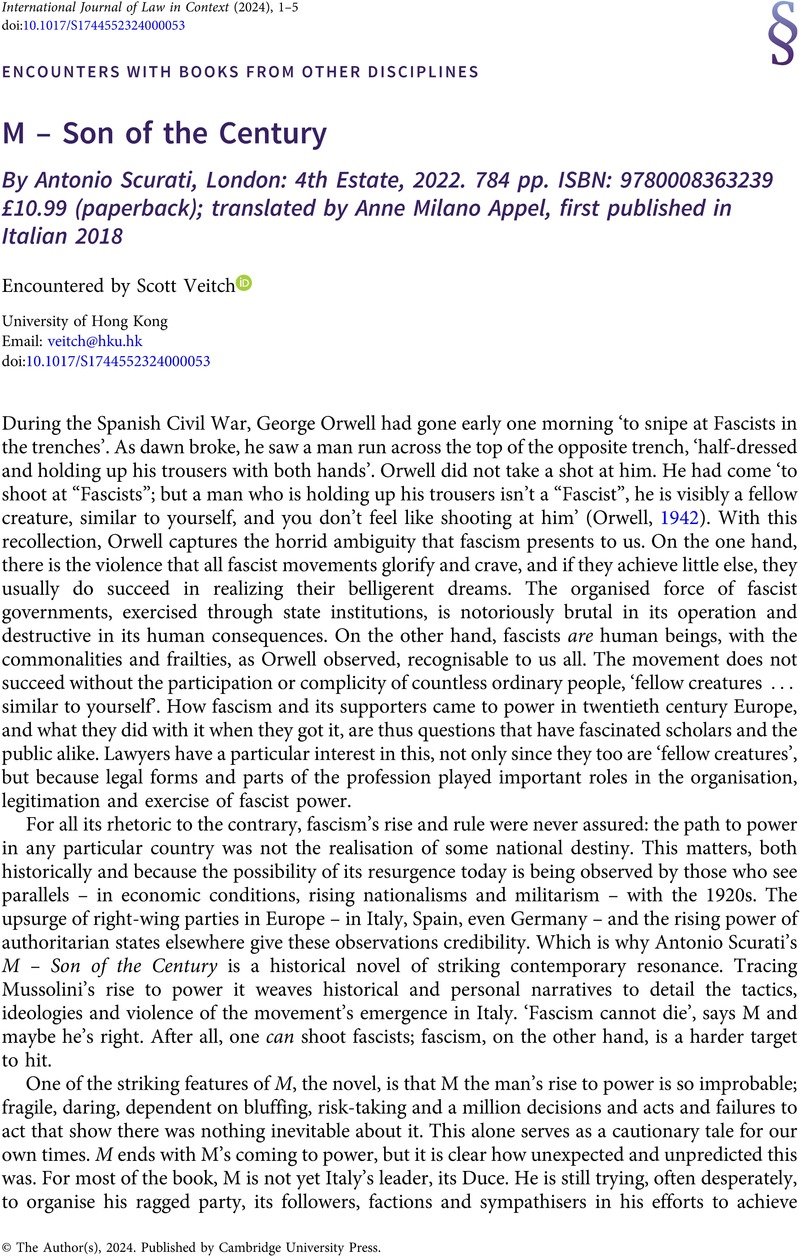No CrossRef data available.
Article contents
M – Son of the Century By Antonio Scurati, London: 4th Estate, 2022. 784 pp. ISBN: 9780008363239 £10.99 (paperback); translated by Anne Milano Appel, first published in Italian 2018
Review products
Published online by Cambridge University Press: 22 April 2024
Abstract

- Type
- Encounters with Books from Other Disciplines
- Information
- International Journal of Law in Context , Volume 20 , Special Issue 3: Populism and Right-Wing Legal Mobilization in Europe , September 2024 , pp. 423 - 427
- Copyright
- © The Author(s), 2024. Published by Cambridge University Press


